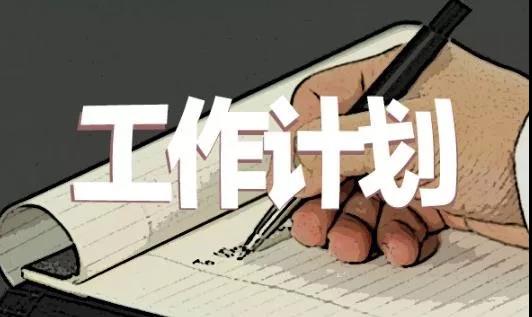gre阅读理解题突破高分的词汇1 callousadj.结硬块的;无情的 hardenv.变硬,变坚强 induratev.使坚硬;使习惯于 ironcladadj.坚固的;装铁甲的 os下面是小编为大家整理的2023年度gre阅读理解题突破高分词汇3篇【优秀范文】,供大家参考。

gre阅读理解题突破高分的词汇1
callous adj. 结硬块的;无情的
harden v. 变硬,变坚强
indurate v. 使坚硬;使习惯于
ironclad adj. 坚固的;装铁甲的
ossify v. 使(传统)僵化;硬化,骨化 (ossiferous adj. 含骨化石的)
rigid adj. 硬性的,刚硬的
stark adj. (外表)僵硬的;完全的
stiff adj. 僵直的,呆板的,严厉的
substantial adj. 坚固的,结实的;实质的
spongy adj. 不坚实的;像海绵的
unsound adj. 不结实的,不坚固的;无根据的
starchy adj. 刻板的;含淀粉的
static adj. 呆板的.,静态的
stiff adj. 呆板的,僵直的,严厉的
tenacious adj. 坚忍不拔的
gre阅读理解题突破高分的词汇2
bandy v. 轻率谈论;来回抛球
cursory adj. 草率的,粗略的
curt adj. (言词、行为)简略而草率的
facetious adj. 轻浮的,好开玩笑的
flippant adj. 轻率的;无礼的
frivolous adj. 轻薄的,轻佻的 (frivolity n. 轻浮)
giddy adj. 轻浮的,不严肃的
headlong adj./adv. 轻率的(地),迅猛的(地)
imprudent adj. 轻率的;不智的
levity n. 轻率;轻浮
perfunctory adj. 草率的,敷衍的
skittish adj. 轻浮的,轻佻的
slipshod adj. 草率的,马虎的
abrupt adj. 唐突的;突然的,意外的
brusque adj. 鲁莽的,唐突的
compulsion n. 难以抗拒的冲动;强迫
daredevil adj./n. 冒失的(人);胆大的(人)
forward adj. 莽撞的,过激的 (forwardness n. 大胆,鲁莽)
impetuous adj. 冲动的,鲁莽的 (impetuosity n. 冲动)
impudent adj. 鲁莽的(粗鲁的),无礼的
impulse n. 冲动;刺激
impulsive adj. 易冲动的
liberty n. 冒失,随意
lowbred adj. 鲁莽的,粗野的
precipitate adj. 鲁莽的;v. 加速,促成 (precipitous adj. 陡峭的;仓促的)
temerity n. 鲁莽,大胆
gre阅读理解题突破高分的词汇3
dermatology(皮科)
ethnology(人种学)
etymology(语源学)
entomology(昆虫学)
neurology(神经学)
ophthalmology(眼科)
entomology(昆虫学)
neurology(神经学)
ophthalmology(眼科)
ornithology(鸟类学)
obstetrics(产科学)
pathology(病理学)
petrology(岩石学)
philology(语言学)
prosody(诗体论)
psephology(选举学)
speleology(洞穴学)
taxonomy(分类学)
topography(地形学)
gastronomy(美食法)
astrology(占星术)
homiletics(说教术)
meteorology(气象学)
gerontology(老人医学)
physiology(生理学)
gre阅读理解题突破高分的词汇3篇扩展阅读
gre阅读理解题突破高分的词汇3篇(扩展1)
——gre考试阅读理解题高频词汇3篇
gre考试阅读理解题高频词汇1
craven adj. 懦弱的,畏缩的
effeminate adj. 缺乏勇气的,柔弱的
fainthearted adj. 懦弱的,无精神的;胆小的
gutless adj. 没有勇气的,懦怯的
ooze v. (勇气)逐渐消失;渗出,慢慢地流
pusillanimous adj. 胆小的
spineless adj. 没骨气的,懦弱的
timid adj. 胆怯的
timidity n. 胆怯
timorous adj. 胆小的,胆怯的
brittle adj. 脆弱的,易碎的 (brittleness n. 脆弱)
effeminate adj. 柔弱的,缺乏勇气的
emasculate adj. 柔弱的;v. 削弱;*
fickle adj. 不坚定的,(爱情或友谊上)易变的
flabby adj. 意志薄弱的;(肌肉)松软的
flaccid adj. 软弱的;松弛的 (flaccidity n. 软弱)
flimsy adj. 脆弱的;轻而薄的
frail adj. 脆弱的;不坚实的
limp adj. 软弱的,松软的;v. 跛行
maudlin adj. 感情脆弱的,爱哭的
spongy adj. 不坚实的;像海绵的
gre阅读理解题的高频词汇:形容粗心
bungle v. 粗制滥造 (bungler n. 笨手笨脚的人)
cursory adj. 粗略的,草率的
distract v. 分心,转移;使发狂
distracted adj. 精神不集中的,心烦意乱的
distrait adj. 心不在焉的
gloss-over v. 潦草地或敷衍地处理某事
halfhearted adj. 不认真的,不热心的
inadvertence n. 漫不经心的
inadvertently adv. 不小心地,非故意地
insouciance n. 漫不经心,漠不关心
insouciant adj. 漫不经心的
negligence n. 粗心,疏忽 (neglect v./n. 忽视;疏忽)
perfunctorily adv. 敷衍地,潦草地,表面地
perfunctory adj. 敷衍的,草率的
potboiler n. 粗制滥造的文艺作品
sketchy adj. 粗略的,概略的
slapdash adv./adj. 马虎地(的)
slipshod adj. 马虎的,草率的
toy v. 不认真考虑,玩弄
gre考试阅读理解题高频词汇2
acerbic adj. 刻薄的;苦涩的
acerbity n. 刻薄,涩,酸
acrid adj. 刻薄的,辛辣的
acrimony n. 尖刻,刻薄
caustic adj. 刻薄的;腐蚀性的;n. 腐蚀剂
demand v. 苛求,要求
demanding adj. 苛刻的,过分要求的
exacting adj. 苛求的;严格要求的
finicky adj. 苛求的,过分讲究的
mordant adj. 尖酸的,讥讽的
nipping adj. 尖酸的;刺骨的
pungent adj. 苛刻的;味道刺激的(辛辣的.)
rigor n. 苛刻,严格;严酷;严密,精确
scathing adj. 苛刻的,严厉的
stringent adj. 苛刻的,(规定)严格的;缺钱的
tart adj. 尖酸的;酸的
vinegared adj. 尖刻的,酸的 (vinegar n. 醋)
vitriolic adj. 刻薄的,强烈的
waspish adj. 尖刻的;易怒的
gre阅读理解题突破高分的词汇3篇(扩展2)
——gre阅读理解题的词汇最新整理3篇
gre阅读理解题的词汇最新整理1
calculating adj. 深谋远虑的,精明的
cogitate v. 慎重思考,思索 (cogitation n. 思考,苦思)
cerebral adj. 深思的;大脑的
deliberate adj. 深思熟虑的,故意的;v. 慎重考虑 (deliberateness/deliberation n. 故意;深思熟虑)
foresight n. 远见,深谋远虑
mature adj. 深思熟虑的;成熟的
meditative adj. 沉思的,善于思考的
visionary adj. 有远见的;幻想的;n. 空想家
improvident adj. 无远见的;不节俭的
myopia n. 缺乏远见;近视
gre阅读理解题的词汇最新整理2
audacious adj. 大胆的;愚勇的 (audacity n. 大胆,鲁莽)
bravado n. 故作勇敢,虚张声势
collected adj. 泰然自若的
daredevil adj./n. 胆大的(人),冒失的(人)
epic adj. 英雄的;大规模的;n. 叙事诗,史诗
exploit n. 英勇行为;v. 剥削;开发利用
gallant adj. 勇敢的;(向女人)献殷勤的 (gallantry n. 勇敢,殷勤)
grit n. 勇气,决心;沙粒;v. 下定决心,咬紧牙关
hardihood n. 大胆,鲁莽
hardy adj. 耐寒的;强壮的
intrepid adj. 无畏的,刚毅的
mettle n. 勇气,斗志
morale n. 士气,精神力量
nerve n. 勇气;v. 鼓起勇气 (nervous adj. 紧张的)
pluck n. 在困难面前足智多谋的勇气,胆量;精力;v. 拔毛;弹拉
prowess n. 勇敢;不凡的能力 (prow adj. 英勇的)
spunk n. 勇气,胆量
stouthearted adj. 大胆的,刚毅的
temerity n. 大胆,鲁莽
valiant adj. 勇敢的,英勇的
valor n. 勇武,英勇
valorous adj. 勇敢的
gre阅读理解题的词汇最新整理3
ennui n. 倦怠,无聊;v. 使无聊
exhaust v. 使非常疲倦;n. (机器排出的)废气,蒸汽
fatigue n. 疲乏,劳累
grueling adj. 繁重而累人的
jade n. 疲惫的老马;玉,翡翠
jaded adj. 疲惫的;厌倦的;(胶卷)曝光过分的
labored adj. 吃力的;(文体等)不自然的
languor n. 身心疲惫
lethargy n. 倦怠;昏睡;呆滞懒散
tire v. 疲劳;n. 轮胎
wearisome adj. 使人感到疲倦或厌倦的(形容物)
weary adj. 疲劳的,令人厌倦的;v. 厌烦
lackadaisical adj. 无精打采的;无兴趣的
languid adj. 没精打采的,倦怠的
lassitude n. 没精打采;无力
listless adj. 无精打采的
slouch n. 没精打采的样子;v. 没精打采地坐(站、走)
fag v. 苦干;n. 苦工
lucubrate v. 埋头苦干,刻苦攻读
plod v. 吃力地干;重步走
toil v./n. 辛苦,辛勤劳作
gre阅读理解题突破高分的词汇3篇(扩展3)
——gre阅读理解题经常考的词汇3篇
gre阅读理解题经常考的词汇1
verdigris n. 铜绿,铜锈
azure n. 天蓝色;adj. 蔚蓝的
sapphire adj. 天蓝色的;n. 青石,蓝宝石
solemn adj. 黑色的;严肃的,庄严的
swarthy adj. (皮肤等)黝黑的
achromatic adj. 非彩色的,无色的
monochromatic adj. 单色的
monochrome adj. 单色的,单色画的
chromatic adj. 彩色的,五彩的
motley adj. 杂色的;混杂的
mottle v. 使成杂色
mottled adj. 有杂色的,斑驳的
piebald adj. 花斑的,斑驳的
pied n. 杂色的
stain v. 杂色;玷污
variegation n. 杂色,斑驳
brindled adj. 有棕色斑纹的 (brindle n. 斑纹,有斑点的动物)
complexion n. 肤色;外表特征
iridescence n. 彩虹色
maroon n./adj. 栗色(的)
salmon n. 鲜肉色;*哈鱼
saturated adj. 深颜色的;浸透的,饱和的
gre阅读理解题经常考的词汇2
assiduous adj. 专心的;勤勉的 (assiduity n. 勤勉)
canny adj. 精明仔细的
cautionary adj. 劝人谨慎的,警戒的
chary adj. 小心的,审慎的
conscientious adj. 小心谨慎的;尽责的
discreet adj. 言行谨慎的
discretion n. 谨慎,审慎
earnest adj. 认真的
engross v. 全神贯注于
engrossment n. 专注(全神贯注);正式誊写的文件
gingerly adj./adv. 小心的(地);谨慎的(地)
intent adj. 专心的,渴望的;n. 目的,意向
measured adj. 慎重的;精确的
methodical adj. 细心的,有条不紊的(有方法的,有系统的)
meticulous adj. 细心的,一丝不苟的
modest adj. 谨慎的,谦虚的;适度的 (modesty n. 谦虚,谦逊)
pious adj. 尽责的,虔诚的
preoccupation n. 全神贯注;使人专注的东西
prissy adj. 谨小慎微的,神经质的,为小事挂虑的
prudence n. 谨慎,小心
prudent adj. 谨慎的,三思而后行的,精明的;节俭的
punctilious adj. 谨小慎微的 (punctual adj. 准时的 punctuate v. 加标点)
rapt adj. 专心致志的,全神贯注的
reserve n. 谨慎,缄默;储备(物),储藏量;v. 保留,储备,预订
sedulous adj. 聚精会神的.,勤勉的
gre阅读理解题经常考的词汇3
arrogance n. 傲慢,自大
arrogant adj. 傲慢的,自大的
bloated adj. 傲慢的;肿胀的
bumptious adj. 傲慢的,自夸的
conceit n. 自负,自大 (conceited adj. 自负的,自高自大的)
consequential adj. 傲慢的,自以为是的
contumely n. 傲慢,无礼
haughty adj. 傲慢的,自大的
hauteur n. 傲慢
headstrong adj. 刚愎自用的
hubris n. 目中无人,过分自信
imperious adj. 傲慢的,专横的
insolence n. 傲慢,无礼
narcissism n. 自恋,自爱 (narcissus n. 水仙花 narcissistic adj. 自恋的)
overweening adj. 自负的,过于自信的
perverse adj. 刚愎自用的,不合适的,故意做对的 (perversity n. 刚愎,悖理行为)
pomposity n. 自大的行为,傲慢,自命不凡
pompous adj. 自大的
pontifical adj. 自以为是的;武断的 (pontiff n. 教皇,主教)
pontificate v. 自大武断地做或说
pretension n. 自命不凡,夸耀
pretentious adj. 自抬身价的(自命不凡的)
self-absorbed adj. 自恋的
smug adj. 自满的,自命不凡的
gre阅读理解题突破高分的词汇3篇(扩展4)
——初二语文阅读理解解题技巧3篇
初二语文阅读理解解题技巧1
一、把握试题的真信息
阅读一篇文章,在答题前首先要做的就是把握选文的全部的真实信息。语文新课标要求“在通读课文的基础上理清思路,理解主要内容。”相当部分考生不重视这一点,匆匆浏览一遍后就开始回答有关问题,结果造成不必要的失误。无锡中考试题中有一篇现代文阅读文章,题目是《岳阳楼记》,其中有两条考题:
一是“没有洞庭湖,岳阳楼不成其为岳阳楼;没有岳阳楼,洞庭湖也就不成其为洞庭湖’,联系上下文,看这句话的意思如何理解?”
二是“通读全文,用简洁的话说说‘岳阳楼值得一游’的几条理由。”
这两道题看似简单,要能圆满地回答也不易。不少考生只注意选句的前后段落,往往不能兼顾全文,因此答案不够准确,失分较多。正确的方法应该是:在充分理解全文的基础上,再去回答有关问题。这样视野宽阔,整体感强,答题才不会有失偏颇,对选文中有些问题才能归纳到位。
二、揣摩选文的话外音
例文
两条河流的理想都是投入大海的怀抱。它们结伴而行,奔流而下。不久,它们遇到一片沙漠。沙漠浩瀚无边,能吞没一切。河流甲勇往直前,并充满激情地说:“为了实现理想,哪怕牺牲自己,我也要穿越沙漠?选”河流乙却若有所思地说:“为了理想,我要等待好时机。”说着,它便掉转了方向。
这是一道颇具开放性的试题,要有创见,我们不能只注重寓言的表面意义,那就是“要实现理想,就要有勇气战胜一切艰难险阻,否则便会一事无成。”我们完全可以换个角度去思考这个问题,河流乙的做法有无可取之处呢?
“把握时机,蓄势待发”、“不死揪蛮干,提高效率”、“减少无谓的牺牲”等等,不正是新时代一种可贵的人才素质吗?我们要融入世界地球村,具备国际市场竞争力,光靠传统的“持之以恒”能否奏效,是否有待于思考呢?读出了话外音,也就拓宽了思路,才会有创见。
三、遵循试题的思想性
诚然,不能为了鼓励学生有创见,而忽略了试题本身的思想性,“培养学生高尚的道德情操和健康的审美情趣,形成正确的价值观和积极的人生态度,是语文教学的重要内容。”(语文新课标语)
泰州市的中考试题中节选了余秋雨的《一个王朝的背影》一文,选文第一段说“清代历史,是小学中唯一用眼泪浸润的课程”,而第三段中作者又说“统观全部*古代史,清朝的皇帝在总体上还算比较好的”。谈谈对作者后一句话的看法。
出题者的用意显然要激发学生的创造性,但也有可能把考生导入误区。有的学生可能认为清代的皇帝是好的,而忽略了作者的前提。考生要从作者的论述中挖掘其思想性,得出正确的结论,真正地认识清朝皇帝的本来面目。
四、领会试题的规律性
不同的作品就会有不同的侧重点,对不同题材、不同类型的文章,我们可以采取不同的方法:
如记叙文有“六要素”阅读法,说明文有“四要点”阅读法(说明对象、说明顺序、说明方法、说明结构),小说有“三要素”阅读法(人物、情节、环境),散文有“神形”阅读法,议论文有“三论”阅读法(论点、论据、论证)等等。
这些基本的阅读方法,需要我们在答题时能融会贯通、运用自如。要做到这一点,得依靠*时的课堂教学积累。我们在答题时要充分把握文章的体裁特点,寻找最佳切入点,提高答题的准确率。
初二语文阅读理解解题技巧2
一、把握试题的真信息
阅读一篇文章,在答题前首先要做的就是把握选文的全部的真实信息。语文新课标要求“在通读课文的基础上理清思路,理解主要内容。”相当部分考生不重视这一点,匆匆浏览一遍后就开始回答有关问题,结果造成不必要的失误。无锡中考试题中有一篇现代文阅读文章,题目是《岳阳楼记》,其中有两条考题:
一是“没有洞庭湖,岳阳楼不成其为岳阳楼;没有岳阳楼,洞庭湖也就不成其为洞庭湖’,联系上下文,看这句话的意思如何理解?”
二是“通读全文,用简洁的话说说‘岳阳楼值得一游’的几条理由。”
这两道题看似简单,要能圆满地回答也不易。不少考生只注意选句的前后段落,往往不能兼顾全文,因此答案不够准确,失分较多。正确的方法应该是:在充分理解全文的基础上,再去回答有关问题。这样视野宽阔,整体感强,答题才不会有失偏颇,对选文中有些问题才能归纳到位。
二、揣摩选文的话外音
例文
两条河流的理想都是投入大海的"怀抱。它们结伴而行,奔流而下。不久,它们遇到一片沙漠。沙漠浩瀚无边,能吞没一切。河流甲勇往直前,并充满激情地说:“为了实现理想,哪怕牺牲自己,我也要穿越沙漠?选”河流乙却若有所思地说:“为了理想,我要等待好时机。”说着,它便掉转了方向。
这是一道颇具开放性的试题,要有创见,我们不能只注重寓言的表面意义,那就是“要实现理想,就要有勇气战胜一切艰难险阻,否则便会一事无成。”我们完全可以换个角度去思考这个问题,河流乙的做法有无可取之处呢?
“把握时机,蓄势待发”、“不死揪蛮干,提高效率”、“减少无谓的牺牲”等等,不正是新时代一种可贵的人才素质吗?我们要融入世界地球村,具备国际市场竞争力,光靠传统的“持之以恒”能否奏效,是否有待于思考呢?读出了话外音,也就拓宽了思路,才会有创见。
三、遵循试题的思想性
诚然,不能为了鼓励学生有创见,而忽略了试题本身的思想性,“培养学生高尚的道德情操和健康的审美情趣,形成正确的价值观和积极的人生态度,是语文教学的重要内容。”(语文新课标语)
泰州市的中考试题中节选了余秋雨的《一个王朝的背影》一文,选文第一段说“清代历史,是小学中唯一用眼泪浸润的课程”,而第三段中作者又说“统观全部*古代史,清朝的皇帝在总体上还算比较好的”。谈谈对作者后一句话的看法。
出题者的用意显然要激发学生的创造性,但也有可能把考生导入误区。有的学生可能认为清代的皇帝是好的,而忽略了作者的前提。考生要从作者的论述中挖掘其思想性,得出正确的结论,真正地认识清朝皇帝的本来面目。
四、领会试题的规律性
不同的作品就会有不同的侧重点,对不同题材、不同类型的文章,我们可以采取不同的方法:
如记叙文有“六要素”阅读法,说明文有“四要点”阅读法(说明对象、说明顺序、说明方法、说明结构),小说有“三要素”阅读法(人物、情节、环境),散文有“神形”阅读法,议论文有“三论”阅读法(论点、论据、论证)等等。
这些基本的阅读方法,需要我们在答题时能融会贯通、运用自如。要做到这一点,得依靠*时的课堂教学积累。我们在答题时要充分把握文章的体裁特点,寻找最佳切入点,提高答题的准确率。
初二语文阅读理解解题技巧3
古代的诗人喜欢用典,其原因一是借他人酒杯浇胸中块垒,为表达委婉一些;二是以古喻今,更理直气壮一些;三是可以用较少的文字传递较多的信息,使表达简明一些。
清楚诗人的用典
一般用典有两层含义:(1)用历史旧事,借古喻今;(2)引用或化用前人诗句,既自明心迹,又丰富诗歌的意蕴,提高诗歌的文化品位,用黄庭坚的话来说就是“脱胎换骨”。
记诵诗歌鉴赏口诀
从原作找到根据;从题干得到启示;从首联找到特点;从尾句参透主旨;从景物把握情感;从意境洞察心胸。
掌握诗歌鉴赏题的答题一般程序
(1)认读感知。读诗后继续仔细阅读各个选择项,借助它们进一步再去对材料做全面的理解,再去解题。另外,还要读标题,读注释,弄清材料的背景或领悟作者的心情。
(2)启动情思。熟悉材料以后,或联想,或想象,进一步体会诗歌意境,同时对已知选项进行大胆筛选。比如,选择项中对一些典故或前人诗句的解释,有些比较冷僻,有些比较牵强,则可以去掉;对作者的评价过高或过小,或武断,或偏激的,也可视为“不恰当”。
(3)单项核对。选择项中有的是解释或分析单项内容的,如对诗歌中的修辞项的解释,我们就可以与诗句逐一核对,去掉那些无中生有的,指鹿为马的。这样,又可为鉴赏扫除了一大障碍。
(4)辨析真伪。在提供的答案中,有时会出现似是而非,有时会出现前是后非,有时还会出现自相矛盾,如选择项中出现“都”、“全部”的判断词,我们就更要注意它是否能自圆其说,结合全诗内容去伪存真。
温馨提示:从题目认识对象;从字面读出感觉;从注释难点;从作者了解背景。
gre阅读理解题突破高分的词汇3篇(扩展5)
——sat阅读理解的高频词汇3篇
sat阅读理解的高频词汇1
Autotroph(自养生物)
An organism that can produce the organic molecules and energy necessary for life through the processes of photosynthesis or chemosynthesis. Autotrophs do not rely on other organisms for food. In a food web, autotrophs are producers.
Auxin(茁长素) :一种植物激素,刺激细胞伸长
One in a class of plant hormones that stimulates (among other things) cell elongation, secondary tissue growth, and fruit development.
amino acid(氨基酸)
The monomer of a protein. A central carbon attached to an amino group (–NH2), a carboxyl group (–COOH), and a hydrogen atom (–H). The fourth group is variable and defines the amino acid’s chemical identity.
amnion(羊膜) :位于最内侧直接覆蓄胚体的膜
The extraembryonic membrane in birds, reptiles, and mammals that surrounds the embryo, forming an amniotic sac.
anaerobic respiration(无氧呼吸)
A form of cell respiration that does not use oxygen (as opposed to aerobic cell respiration). Anaerobic respiration is less efficient than the aerobic variety and produces just 2 ATP per molecule of glucose. Anaerobic respiration has two stages: glycolysis and fermentation(发酵).
*ogous trait (相似特征):来源于相同祖先,与其他生物种功能、形态上相似的结构
A trait that is morphologically and functionally similar to that of a different species but that arose from a distinct, ancestral condition.
anaphase (分裂后期)
The stage of mitosis in which sister chromosomes are separated and pulled to opposite ends of the cell by microtubules; the fourth stage of the first meiotic division (meiosis I), during which maternal and paternal homologous pairs are separated on microtubules; the fourth stage of the second meiotic division (meiosis II), during which either maternal or paternal sister chromatids are separated on microtubules.
androgen(雄性激素)
A male sex hormone. (e.g. *【睾酮】)
Angiosperm(被子植物)
A vascular flowering plant in which seeds are enclosed inside protective ovaries, such as fruit or flowers. Angiosperms can be monocots(单子叶) or dicots(双子叶).
Anther(花粉囊,花药)
Pollen-producing structure at the top of the stamen, the male reproductive organ of flowers.
Anticodon(反密码子) :位于tRNA上,和mRNA的"密码子相反配对
The sequence of three nucleotides on tRNA that pairs with a codon of mRNA at the A site of a ribosome during translation.
Antigen(抗原)
A protein coat on the surface of red blood cells; a red blood cell may have a protein coat of type A, B, or AB. If the cell has no antigens, it is called type O. The presence of a foreign antigen in a body will cause blood to clot.
Aorta(大动脉)
The largest artery in the body; carries oxygenated blood from the left ventricle of the heart.
aphotic zone(无光带)
Literally, zone without light. The aphotic zone is part of the marine pelagic zone and begins 600 feet below the surface of the ocean. Only chemosynthetic organisms, scavengers, and predators are able to survive in this habitat.
sat阅读理解的高频词汇2
taste buds(味蕾)
Structures on the tongue that contain chemoreceptors, which respond to four main sensations—sour, salty, bitter, and sweet—to create the sense of taste.
Taxonomy(分类法)
The study of biological classification.
Telophase(末期)
The final stage of mitosis before cytokinesis. In telophase, the nuclear envelope re-forms around separated sister chromatids and kinetochore microtubules disappear. Cell elongation also occurs during this phase. The final stage of the first meiotic division (meiosis I), during which chromosomes arrive at the poles of the cell and begin to recondense; the final stage of the second meiotic division (meiosis II), during which chromosomes arrive at the poles of the cell, the nuclear envelope begins to re-form, and the chromosomes begin to recondense.
Tendon(腱)
Connective tissue between bones and muscles.
Testes(睾丸)
The male gonads; sperm and * are produced here.
Testosterone(睾酮)
A hormone necessary for sperm production in men. Also responsible for developing and maintaining the secondary sex characteristics of males, starting at puberty.
Thyroid(甲状腺)
Gland that produces the hormone thyroxine, which increases the metabolism of most of the cells in the body. Located in the neck.
Tissue(组织)
A group of closely connected and similar cells that cooperate to generate a specific structure or specialized function within an organism.
Tracheophyte(维管植物)
A terrestrial plant with a vascular system.
Trait(特征)
Any observable feature or characteristic of an organism.
transfer RNA (Trna/翻译RNA)
An RNA molecule used in protein synthesis as a link helping to convert messenger RNA into amino acids.
Transpiration(蒸发作用)
The process by which a plant loses water to its environment through evaporation.
trophic level(营养级)
Steps on a food/biomass pyramid that are defined by organisms within a community that are the same distance from the primary producers in a food web.
Tropism(向性)
Long-term growth of a plant toward or away from a stimulus.
Tuber(块茎)
Fleshy underground storage structure composed of an enlarged portion of the stem that has on its surface buds capable of producing new plants.
gre阅读理解题突破高分的词汇3篇(扩展6)
——高考英语阅读理解题型 (菁选3篇)
高考英语阅读理解题型1
主旨大意题主要考查学生对所读材料(或所读材料片断)中心思想的概括。做这类题时,考生应通读全文,把握文章大意或中心思想,同时注意文章的主题句,因为主题句表达中心思想,其他句子均围绕主题句进行展开。主题句通常位于文章第一段首句、第一段末句或全文末句等地方,但位于段落中间(通常是第一段或最后一段的中间)也是完全可能的。主旨大意题的考查形式很多,如概括标题、主题、段意、中心思想等。请看浙江卷中的一个段落:
In the course of working my way through school, I took many jobs I would rather forget. But none of these jobs was as dreadful as my job in an apple plant. The work was hard; the pay was poor; and, most of all, the working conditions were terrible.
◎What is the subject discussed in the text?
A. The writer’s unhappy school life
B. The writer’s eagerness to earn money
C. The writer’s experience as a full-time worker
D. The writer’s hard work in an apple plant
原文共有五个自然段,上面摘录的只是文章的第1个自然段,但是如果考生训练有素的话,只要读完这个段落就可猜出此题的答案了。因为文章第一句说In the course of working my way through school, I took many jobs I would rather forget,接着作者用but引出一个新的情况(即主题句):none of these jobs was as dreadful as my job in an apple plant. 再接下来又说: The work was hard; the pay was poor; and, most of all, the working conditions were terrible. 聪明的读者至此应该可以猜测到,下面的几个段落肯定是介绍这个apple plant 的work是如何的hard,它的pay是如何的poor,它的working conditions 是如何的terrible 等。比较四个选项,只有选项D所表述内容合乎上面的分析,故选D。
高考英语阅读理解题型2
O. Henry was a pen name used by an American writer of short stories. His real name was William Sydney Porter. He was born in North Carolina in 1862. As a young boy he lived an exciting life. He did not go to school for very long, but he managed to teach himself everything he needed to know. When he was about 20 years old, O. Henry went to Texas, where he tried different jobs. He first worked on a newspaper, and then had a job in a bank, when some money went missing from the bank O. Henry was believed to have stolen it. Because of that, he was sent to prison. During the three years in prison, he learned to write short stories. After he got out of prison, he went to New York and continued writing. He wrote mostly about New York and the life of the poor there. People liked his stories, because simple as the tales were, they would finish with a sudden change at the end, to the reader’s surprise.
1. In which order did O. Henry do the following things?
a. Lived in New York. b. Worked in a bank. c. Travelled to Texas.
d. Was put in prison. e. Had a newspaper Job. f. Learned to write stories.
A. e. c. f. b. d. a B. c. e. b. d. f. a C. e. b. d. c. a. f. D. c. b. e. d. a f.
2. People enjoyed reading O. Henry’s stories because
A. they had surprise endings B. they were easy to understand
C. they showed his love for the poor D. they were about New York City
3. O. Henry went to prison because .
A. people thought he had stolen money from the newspaper
B. he broke the law by not using his own name
C. he wanted to write stories about prisoners
D. people thought he had taken money that was not his
4. What do we know about O. Henry before he began writing?
A. He was well-educated. B. He was not serious about his work.
C. He was devoted to the poor. D. He was very good at learning.
5. Where did O. Henry get most material for his short stories?
A. His life inside the prison. B. The newspaper articles he wrote.
C. The city and people of New York. D. His exciting early life as a boy.
答案:
1B 2 A 3 D 4 D 5 C
高考英语阅读理解题型3
【典例1】 The global energy crisis is approaching. What can we do? Here are some steps you can take。
Cooling puts the greatest stress on your summer energy bill and the power grid(电网). Just as a tune-up for your car can improve your gas mileage, a yearly tune-up of your heating and cooling system can improve efficiency and comfort. Clean or replaces filters monthly or as needed。
……
Drive the car that gets better gas mileage whenever possible if you own more than one vehicle. If you drive 12,500 miles a year, switching 10 percent of your trips from a car that gets 20 miles per gallon to one that gets 30 mpg will save you more than £65 per year。
Carpool. The average U.S. commuter(乘车上班族) could save about £260 a year by sharing cars twice a week with two people in a car that gets 20.1 mpg—assuming the three passengers share the cost of gas. (2008·安徽卷)
This passage is mainly about ________。
A. energy-saving tips B. fuel-saving tips
C. do-it-yourself tips D. environment-protecting tips
【解析】本文主要介绍了如何节约能源。本文是一篇科普文章,主题很明显,文章一开始就点明了主题,接下来整篇文章都是围绕如何save energy展开,而save fuel仅仅只是其中的一部分。故选A。针对主旨大意类题目,应采用快速阅读法(Skimming)浏览全文。在阅读时,应特别注意文章的开头、结尾及段落的段首句和段尾句,因为他们往往名包含文章的中心议题。
gre阅读理解题突破高分的词汇3篇(扩展7)
——高考英语阅读理解题的答题技巧 (菁选3篇)
高考英语阅读理解题的答题技巧1
《普通高中英语课程标准》中达到英语学科的高中毕业要求为七级,其有关阅读最基本的要求是:“能从一般性文章中获取和处理主要信息”。对这种“获取和处理主要信息”能力的考查,主要采用的方式就是:细节判断。这类题在高考阅读理解题中占一定的比例,做好这类题是确保基础分的关键。同时,弄清细节,正确获取信息,也是把握文章主旨的前提。因此,要特别重视做好这类题。
细节判断题题干常见的问句形式多种多样。如:
Which of the following is NOT mentioned in the passage?
Which of the following statements is NOT true?
Which of the following statements is correct according to the passage?
Which of the following is NOT considered as …?
According to the passage, which of the following is NOT mentioned as one of the reasons for … ?
How many … … ?
What/who/when/where/how/why … … ?
做这类题的一般方法是通过skimming把握文章中心后,再通过寻读法(scanning)快速确定该细节在文中的出处(信息源),对照选项进行“三对一错或三错一对”的判断。若该信息句是长句或难句,要学会找出其主干部分、分析句子结构,正确理解信息句的意义。
命题者在出这类题时惯用“偷梁换柱、张冠李戴”的手法来迷惑考生,即对原句细微处做改动,截取原文词语或结构进行改造,因果倒置,把A的"观点说成B的观点等。所以正确理解题干和信息句的意义是关键。
这类细节性问题所涉及的面很广,有的需要经过简单的数*算确定时间、距离、次数、数量等;有的涉及正误判断;有的询问事实、原因、结果、目的等。例如:(注:本书例题练习中选用全国各地高考题均保留原题号)
(05全国卷II B篇)The days of elderly women doing nothing but cooking huge meals on holidays are gone. Enter the Red Hat Society -a group holding the belief that old ladies should have fun.
“My grandmothers didn’t do anything but keep house and serve everybody. They were programmed to do that,” said Emily Comette, head of a chapter of the 7-year-old Red Hat Society.
While men have long spent their time fishing and playing golf, women have sometimes seemed to become unnoticed as they age. But the generation now turning 50 is the baby boomers(生育高峰期出生的人), and the same people who refused their parents’ way of being young are now trying a new way of growing old.
If you take into consideration feminism(女权主义), a bit of spare money, and better health for most elderly, the Red Hat Society looks almost inevitable(必然的). In this society, women over 50 wear red hats and purple(紫色的) clothes, while the women under 50 wear pink hats and light purple clothing.
“The organization took the idea from a poem by Jenny Joseph that begins: When I am an old woman, I shall wear purple. With a red hat which doesn’t go.” said Ellen Cooper, who founded the Red Hat Society in 1998. When the ladies started to wear the red hats, they attracted lots of attention.
“The point of this is that we need a rest from always doing something for someone else,” Cooper said. “Women feel so ashamed and sorry when they do something for themselves.” This is why chapters are discouraged from raising money or doing anything useful. “We’re a ladies’ play group. It couldn’t be more simple,” added Cooper’s assistant Joe Heywood.
47.Who set up the Red Hat Society ?
A.Emily Comette. B.Ellen Cooper. C.Jenny Joseph. D.Joe Heywood.
48.Women join the Red Hat Society because .
A.they want to stay young
B.they would like to appear more attractive
C.they would like to have fun and live for themselves
D.they want to be more like their parents
解析:这两题都是细节判断题。和47题相关的信息句是文中的:“The organization took the idea from a poem by Jenny Joseph that begins: When I am an old woman, I shall wear purple. With a red hat which doesn’t go.” said Ellen Cooper, who founded the Red Hat Society in 1998. 理解了这句话,我们不难得出答案B。 通过浏览我们了解了“the Red Hat Society”这个社团的性质和作用,再结合信息句 “Enter the Red Hat Society -a group holding the belief that old ladies should have fun.”,我们很容易得出48题正确答案为C。
(05 福建卷 A 篇)Paul Zindel’s death on March 27,2003 ended the brilliant life of a famous writer.
Not only did Paul Zindel win a Pulitzer Prize as well as an Obie Prize for his 1970 play The Effect of Gamma Rays on Man-in-the-Moon Marigolds, but he was one of the earliest writers in the field of contemporary(当代的) literature for young *s(*). The Pigman, published in 1968, is still one of the most well-known and widely-taught novels in the genre. The American Library Association has named it one of the 100 Best of the Best Books for Young Adults published between 1967 and 1992, and Zindel’s autobiography, The Pigman and Me, was among the 100 Best of the Best Books published for teenagers during the last part of the twentieth century. Six of Zindel’s books, in fact, have been voted the Best Books for Young Adults, and most of his recent horror books-such as The Doom Stone and Rats have been chosen as Quick Picks for Reluctant Young Adult Readers. Clearly, he was a writer who knew how to interest contemporary children. Recognizing that, the American Library Association in 2002 honored Paul Zindel with the Margaret A. Edwards Prize for his lifetime achievements, and later that same year he was presented with the ALAN Prize for his contributions to Young Adult Literature. With his passing, young readers, teachers, and librarians have lost a great friend.
56.Which of Paul Zindel’s books was the most popular with young *s in the 20th century?
A.The Pigman.
B.The Doom Stone.
C.The Pigman and Me.
D.The Effect of Gamma Rays on Man-in-the-Moon Marigolds.
57.Why was Paul Zindel honored with the Margaret A. Edwards Prize?
A.His books were widely read by children.
B.His books were interesting and helpful to *s.
C.He made great contributions to contemporary literature.
D.He wrote a number of horror books for young *s.
58.When did Paul Zindel win the ALAN Prize?
A.In 2002. B.In 2003.
C.Between 1967 and 1992. D.Between 2002 and 2003.
59.Choose the correct statements from the following according to the passage.
a.The Pigman and Me was one of the Best Books for teenagers.
b.Zindel was one of the earliest writers who wrote for *s only.
c.The Doom Stone and Rats are not popular with young *s.
d.Zindel was given four prizes for literature before he died.
e.At least eight of Zindel’s books were very popular in his times.
A.c, d, e B.a, b, c C.a, b, d D.a, d, e
解析:这四题都是细节判断题。56、57、58三题, 只要我们根据题干的问句找到信息源,很快就能找到正确答案分别是:A、C、A,做第59题时我们要对五个陈述作出正误判断,b、c两个说法是错误的,因此,正确答案为D。
下面请同学们实战演练上述方法和技巧。
高考英语阅读理解题的答题技巧2
主旨题一般会放在第一个或最后一个考。如果放在第一个,则看完全文再做。
主旨题一般会涉及文章最中心的东西。应注意看文章的第一段和每段首句进行总结。
正确解的特征:含有文章所涉及的中心词,简明扼要但概括全面。
切记:
(1)只反映文章某一细节或某一段落的选项一定不是解
(2)如果文章用了大量的篇幅阐述一个问题或说明一个事物,只在最后用少量的文字提及了一些与前面所论相反的内容或其他与前面所论关系不很紧密的内容,文章的主旨不受后面的影响。能概括文章主要阐述内容的为解。
高考英语阅读理解题的答题技巧3
① 返回原文,找出出题的指代词。
② 向上搜索,找最近的名词、名词性短语或句子(先从最近点开始找,找不到再找次近的,一般答案不会离得太远)。
③ 将找到的词、词组或句子的意思代入替换该指代词,看其意思是否通顺。
④ 将找到的词、词组或句子与四个选项进行比较,找出最佳答案。
gre阅读理解题突破高分的词汇3篇(扩展8)
——高三语文阅读理解题的解题策略 (菁选2篇)
高三语文阅读理解题的解题策略1
1.不要急着去做题,在进入题目之前,必须读两遍文章。第一遍速读,作快速浏览,摄取各段大概意思,建立起对文章的整体认识,集中解决一个问题——选文写的是什么?第二遍精读,仔细阅读每句话,揣摩、参悟一些重要的句子、段落,对文章的主旨产生一定的认识。
2.画出在文章的结构上起过渡、连接作用的词语、句子、段落,画出各段落中的中心句,尤其注意段首、段尾,这些词句往往就是回答问题时需要重点研读的,通过找重要的词句进一步理解文章的思路,结构层次。
3.心中要有文体意识,找出画龙点晴的句子。作为托物言志类的哲理性散文,在叙述和描写中总有一些议论和抒情的语句,阅读时一定要善于抓住议论抒情的句子去把握文意,尤其注意文章结尾的议论抒情,它们往往就是全文的主旨所在。
高三语文阅读理解题的解题策略2
做现代文阅读主观题的关键在于准确地审题,抓住了审题这个关键,就找到了答题的诀窍。现代文阅读的审题,就是要仔细分析题干,把握题目要求,即把握题干中包含的.与答案相关的各种信息。这是答题的第一步,也是最关键的一步。题干一般由两个部分组成,一是文章作者的话,一是命题者的话。设置题干的目的,主要是限定答题内容;同时,命题者为了使考生不至于茫然无绪,往往又会在题干中提示答题内容在文中的位置,甚至限定了在哪一段或哪个句子中。这样我们就可以根据题干的提示,找出每一道题的出题点,锁定答题区间,具体到段、句、词。只要找准了原文中的相关区域,认真揣摩上下文的文意,准确抓住关键词句,准确地把握住答案的有关信息,大多数题目的答案是能够在原文中找到的。
文学作品阅读多为主观题,其题干不仅能显示答题的区域,还能显示答题的方式。要站在命题人所“问”的角度回答问题,问什么答什么,使所答充分、到位、准确、有条理。整合时一定要确保文通句顺。
gre阅读理解题突破高分的词汇3篇(扩展9)
——英语四级阅读理解题
英语四级阅读理解题1
What is it about Americans and food? We love to eat, but we feel 1 about it afterward. We say we want only the best, but we strangely enjoy junk food. We’re 2 with health and weight loss but face an unprecedented epidemic of obesity(肥胖). Perhaps the 3 to this ambivalence(矛盾情结) lies in our history. The first Europeans came to this continent searching for new spices but went in vain. The first cash crop(经济作物) wasn’t eaten but smoked. Then there was Prohibition, intended to prohibit drinking but actually encouraging more 4 ways of doing it.
The immigrant experience, too, has been one of inharmony. Do as Romans do means eating what “real Americans” eat, but our nation’s food has come to be 5 by imports—pizza, say, or hot dogs. And some of the country’s most treasured cooking comes from people who arrived here in shackles.
Perhaps it should come as no surprise then that food has been a medium for the nation’s defining struggles, whether at the Boston Tea Party or the sit?ins at southern lunch counters. It is integral to our concepts of health and even morality whether one refrains from alcohol for religious reasons or evades meat for political 6 .
But strong opinions have not brought 7 . Americans are ambivalent about what they put in their mouths. We have become 8 of our foods, especially as we learn more about what they contain.
The 9 in food is still prosperous in the American consciousness. It’s no coincidence, then, that the first Thanksgiving holds the American imagination in such bondage(束缚). It’s what we eat—and how we 10 it with friends, family, and strangers—that help define America as a community today.
A. answer I. creative
B. result J. belief
C. share K. suspicious
D. guilty L. certainty
E. constant M. obsessed
F. defined N. identify
G. vanish O. ideals
H. adapted
答案及解析
1.D feel是一个系动词,可以判断此处应填入一个形容词,通过上下文意思,以及后面介词about, 可以确定选项为D项guilty, 短语feel guilty about sth. “对……感到有愧”。全句的意思为“我们很爱吃,但是往往在吃完之后又有负罪感”。
2.M be obsessed with 为固定搭配,原意为“被……附上/缠住/迷住心窍”,放在本句表示“十分重视”。全句的意思为“我们很关心健康和减肥,但肥胖却又空前地在蔓延”。
3. A 本句缺一个名词作主语,并且根据和介词to的搭配,可以推断出正确选项answer.
4. I本句根据more和ways可以判断出需要填入一个形容词构成比较级,根据上下文,表示“旨在禁止酗酒的禁酒令,却激发了更多新奇的方法来酗酒”,可以确定I为正确选项。
5. F 本题较难。根据be 和by 确定应填入一个过去分词。再根据上下文,上文表示“应该吃典型的美国人吃的食物”,下文通过 but 转折,表示实际上“美国的食物已经被诸如比萨和热狗这样的舶来品所诠释了”,因此可以确定F为正确选项。
6.B政治结果,可根据宗教原因religious reasons来推断此处填政治结果。
7. L由于横线后面没有宾语,可以确定不是形成bring的短语,这样本句所缺的为一名词,做bring的宾语。根据下文解释,“美国人对他们所吃的食物的态度是矛盾的”,可以推出本句意义为“坚定的观点也不是确定不变的”。因此可以确定L为正确选项。
8. K系动词become后应填入一个形容词,和后面介词of形成短语be/become suspicious of “对……感到怀疑”。
9. J本句缺一个名词作主语,并且根据和介词in的搭配,可以推断出正确选项belief,(have)belief in sth.“ 相信……”。
10. C本句是一般现在时,缺一个动词,且和with 搭配,确定选项为share, share sth. with sb., “与某人分享某事”。



